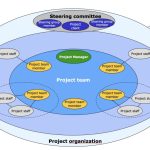The uncertainty in undertaking a construction project comes from many sources and often involves many participants in the project. Since each participant tries to minimize its own risk, the conflicts among various participants can be detrimental to the project. Only the owner has the power to moderate such conflicts as it alone holds the key to risk assignment through proper contractual relations with other participants. Failure to recognize this responsibility by the owner often leads to undesirable results. In recent years, the concept of “risk sharing/risk assignment” contracts has gained acceptance by the federal government. Since this type of contract acknowledges the responsibilities of the owners, the contract prices are expected to be lower than those in which all risks are assigned to contractors.
In approaching the problem of uncertainty, it is important to recognize that incentives must be provided if any of the participants is expected to take a greater risk. The willingness of a participant to accept risks often reflects the professional competence of that participant as well as its propensity to risk. However, society’s perception of the potential liabilities of the participant can affect the attitude of risk-taking for all participants. When a claim is made against one of the participants, it is difficult for the public to know whether a fraud has been committed, or simply that an accident has occurred.
Risks in construction projects may be classified in a number of ways. One form of classification is as follows:
1. Socioeconomic factors
· Environmental protection
· Public safety regulation
· Economic instability
· Exchange rate fluctuation
2. Organizational relationships
· Contractual relations
· Attitudes of participants
· Communication
3. Technological problems
· Design assumptions
· Site conditions
· Construction procedures
· Construction occupational safety
The environmental protection movement has contributed to the uncertainty for construction because of the inability to know what will be required and how long it will take to obtain approval from the regulatory agencies. The requirements of continued re-evaluation of problems and the lack of definitive criteria which are practical have also resulted in added costs. Public safety regulations have similar effects, which have been most noticeable in the energy field involving nuclear power plants and coal mining. The situation has created constantly shifting guidelines for engineers, constructors and owners as projects move through the stages of planning to construction. These moving targets add a significant new dimension of uncertainty which can make it virtually impossible to schedule and complete work at budgeted cost. Economic conditions of the past decade have further reinforced the climate of uncertainty with high inflation and interest rates. The deregulation of financial institutions has also generated unanticipated problems related to the financing of construction.
Uncertainty stemming from regulatory agencies, environmental issues and financial aspects of construction should be at least mitigated or ideally eliminated. Owners are keenly interested in achieving some form of breakthrough that will lower the costs of projects and mitigate or eliminate lengthy delays. Such breakthroughs are seldom planned. Generally, they happen when the right conditions exist, such as when innovation is permitted or when a basis for incentive or reward exists. However, there is a long way to go before a true partnership of all parties involved can be forged. During periods of economic expansion, major capital expenditures are made by industries and bid up the cost of construction. In order to control costs, some owners attempt to use fixed price contracts so that the risks of unforeseen contingencies related to an overheated economy are passed on to contractors. However, contractors will raise their prices to compensate for the additional risks.
The risks related to organizational relationships may appear to be unnecessary but are quite real. Strained relationships may develop between various organizations involved in the design/construct process. When problems occur, discussions often center on responsibilities rather than project needs at a time when the focus should be on solving the problems. Cooperation and communication between the parties are discouraged for fear of the effects of impending litigation. This barrier to communication results from the ill-conceived notion that uncertainties resulting from technological problems can be eliminated by appropriate contract terms. The net result has been an increase in the costs of constructed facilities.
The risks related to technological problems are familiar to the design/construct professions which have some degree of control over this category. However, because of rapid advances in new technologies which present new problems to designers and constructors, technological risk has become greater in many instances. Certain design assumptions which have served the professions well in the past may become obsolete in dealing with new types of facilities which may have greater complexity or scale or both. Site conditions, particularly subsurface conditions which always present some degree of uncertainty, can create an even greater degree of uncertainty for facilities with heretofore unknown characteristics during operation. Because construction procedures may not have been fully anticipated, the design may have to be modified after construction has begun. An example of facilities which have encountered such uncertainty is the nuclear power plant, and many owners, designers and contractors have suffered for undertaking such projects.
If each of the problems cited above can cause uncertainty, the combination of such problems is often regarded by all parties as being out of control and inherently risky. Thus, the issue of liability has taken on major proportions and has influenced the practices of engineers and constructors, who in turn have influenced the actions of the owners.
Many owners have begun to understand the problems of risks and are seeking to address some of these problems. For example, some owners are turning to those organizations that offer complete capabilities in planning, design, and construction, and tend to avoid breaking the project into major components to be undertaken individually by specialty participants. Proper coordination throughout the project duration and good organizational communication can avoid delays and costs resulting from fragmentation of services, even though the components from various services are eventually integrated.
Attitudes of cooperation can be readily applied to the private sector, but only in special circumstances can they be applied to the public sector. The ability to deal with complex issues is often precluded in the competitive bidding which is usually required in the public sector. The situation becomes more difficult with the proliferation of regulatory requirements and resulting delays in design and construction while awaiting approvals from government officials who do not participate in the risks of the project.



Comments are closed